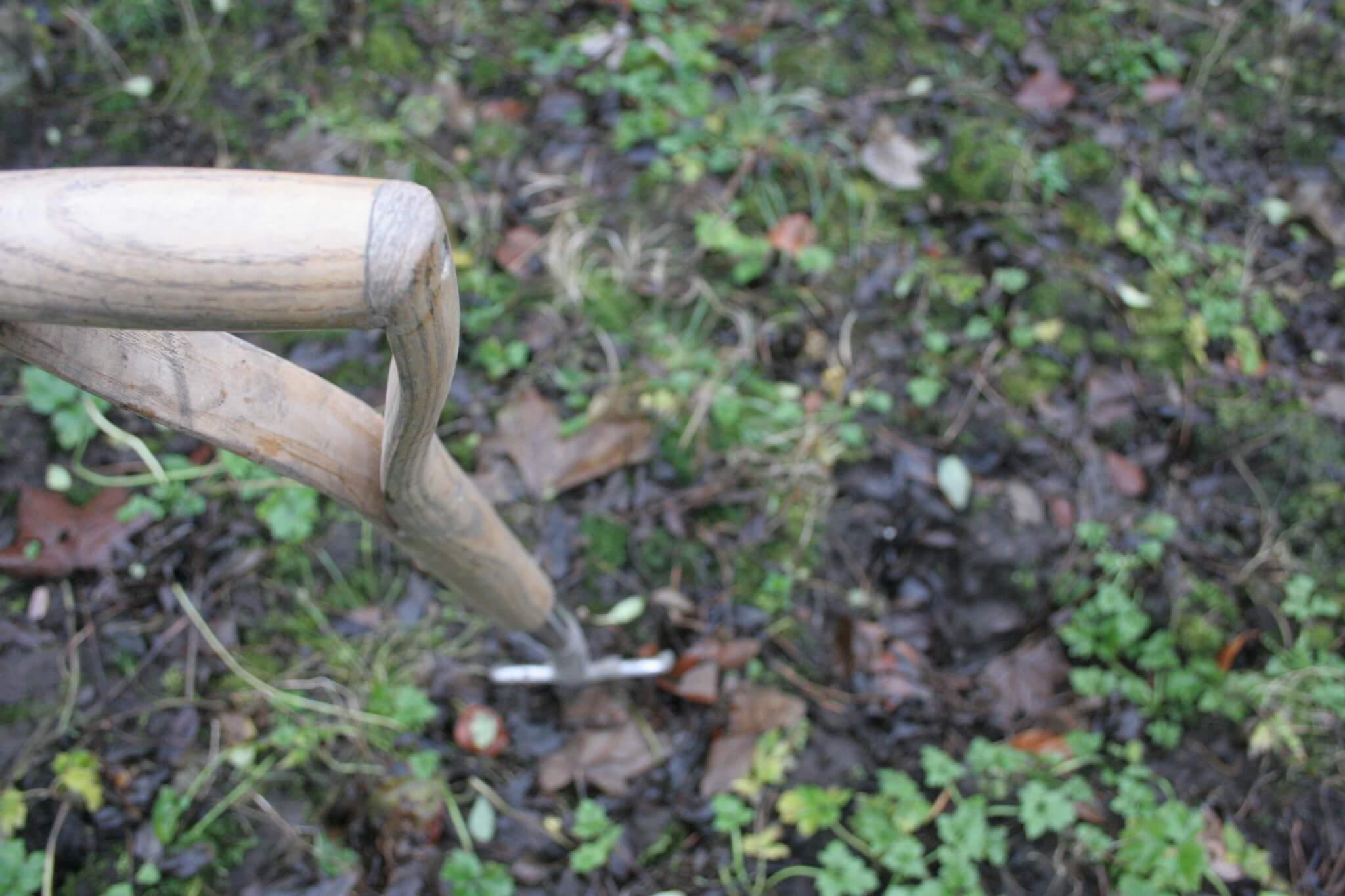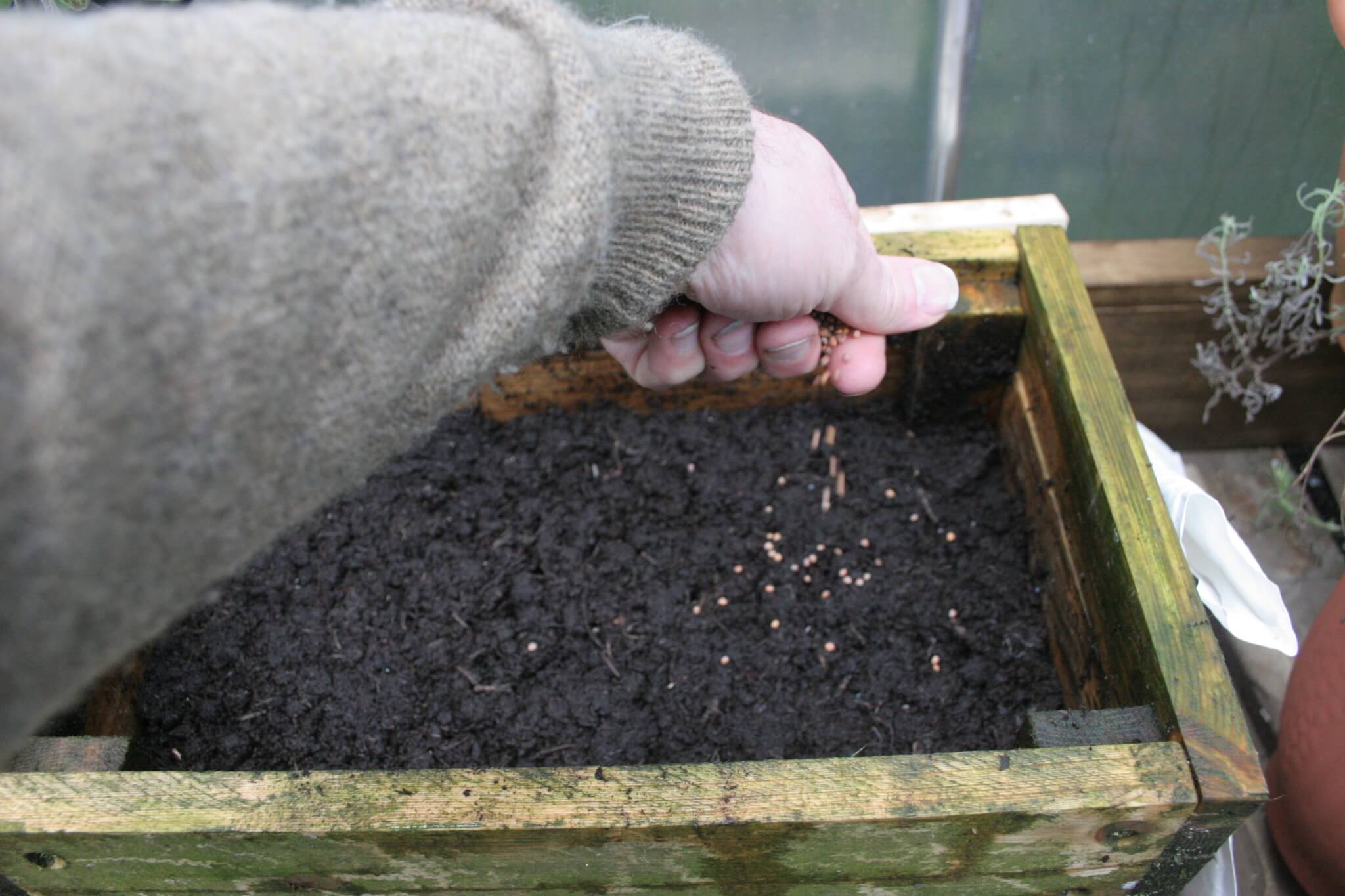The exciting part of New Year is the expectation – how is the year going to turn out and, especially in the garden, will it be the same as last year?
Hope not! Certainly the weather was the overriding factor affecting the garden last year, and if you are in to veggies, like me, then it was a complete wash out – literally! I actually chased my potatoes in a six inch torrent of water that was travelling faster than I could run. And to think that we moved here thinking that because we were on a hill we would have no flooding troubles.
But it never is the same and, over the years, we have found the garden has a life of its own. Yes, we can plan and change stuff, but the garden has its own character that always shines through, and we do our best to foster that character.
The Christmas tree in January..
Last year we had a real Christmas tree and one of the first jobs of January was to recycle the remains. We normally have an artificial tree, but that year, the real one came out of a disaster – a car had come off the road and crashed into a copse of young firs, so we took advantage of the situation, and as no one was hurt, it seemed the right thing to do.
Christmas trees, like most pines, are full of resin, and do not rot so easily. Therefore we simply chopped up the branches and use them as mulch. The main stem was sawn for the fire and the ashes poured into the compost heap.
Snowdrops!

Snowdrops are a favourite for January, such a delicate plant to look at, but this little beauty is as tough as old boots. I am naturalizing them about the garden, but they seem to do that all on their own too, setting seed everywhere, even in the cracks of the paving.
Snowdrops are dug up in August and then simply pushed into the ground in their new location- and quite forgotten until they pop up with a shout in late December – early January. They do well in the barest of soils, the only real care they need is to be left alone, and not walked on. Once they have flowered, let them grow leaves for several months, so they can manufacture more of the corms that we distribute around the garden in high summer.
Another job for January is the lawn. Work off all those extra dinners of the festive season by aerating the lawn, if not too wet, and also trim up the edges, a job which always improves the lawn’s appearance. When I had one to play with, January was the ideal time for working on the gutters of bowling greens, getting them just right – we tend to forget the lawn is at its weakest, and likely it’s most vulnerable at the edges.
Think Spring!
You may remember one of my earlier blogs was about putting dahlias to bed for the winter, in a frost free place, having dug up the tubers, divided and dusted with sulphur powder, and set them in a cool but frost free place. Now is time to give them a check for rot of any kind. Open them up and have a good inspection for any signs of rotting, bad odours, blackness, weeping or anything else untoward. Remove any offenders and repack for a couple of months to continue their sleep. We need to inspect them because they would infect the whole set if left, which would be a disaster.
If you haven’t already done so, dig over your plots, making sure you are careful not to damage roots of trees and shrubs, and if you can, give them a good mulch of well-rotted compost. Take special care of young fruit trees at this time of the year, as well as the compost mulch, make sure they are secure in the ground, so they will not be blown about by the wind and weather of January, and if they are in their second year, you can prune them. All you need to think about is making them into a goblet shape – so the drying summer wind can reduce the humidity around the plant, reducing fungal infections.
Cut away small branches that turn inward or cross and touch another, and that’s all you need to do to give the plant a successful start to the year.

You can sow onions seeds now. Don’t mess about fiddling with a few seeds in small modules. Get a wooden box or seed tray and fill it full of seeds. Water and keep warm. You will end up with a Mohican hair-cut of onions growing, which you can tease apart and then transplant in April. And while we’re on the subject of sowing, start hoeing your parsnip bed – these seeds are in the ground for a long time – hoe and give a dressing of general purpose organic fertilizer and then cover with plastic sheeting to warm the soil in preparation.
–

Paul Peacock studied botany at Leeds University, has been the editor of Home Farmer magazine, and now hosts the City Cottage online magazine. An experienced gardener himself, his expertise lies in the world of the edible garden. If it clucks, quacks or buzzes, Paul is keenly interested.
He is perhaps best known as Mr Digwell, the cartoon gardener featured in The Daily Mirror since the 1950s. As Mr Digwell he has just published his book, A Year in The Garden. You can also see more about him on our Mr Digwell information page.


